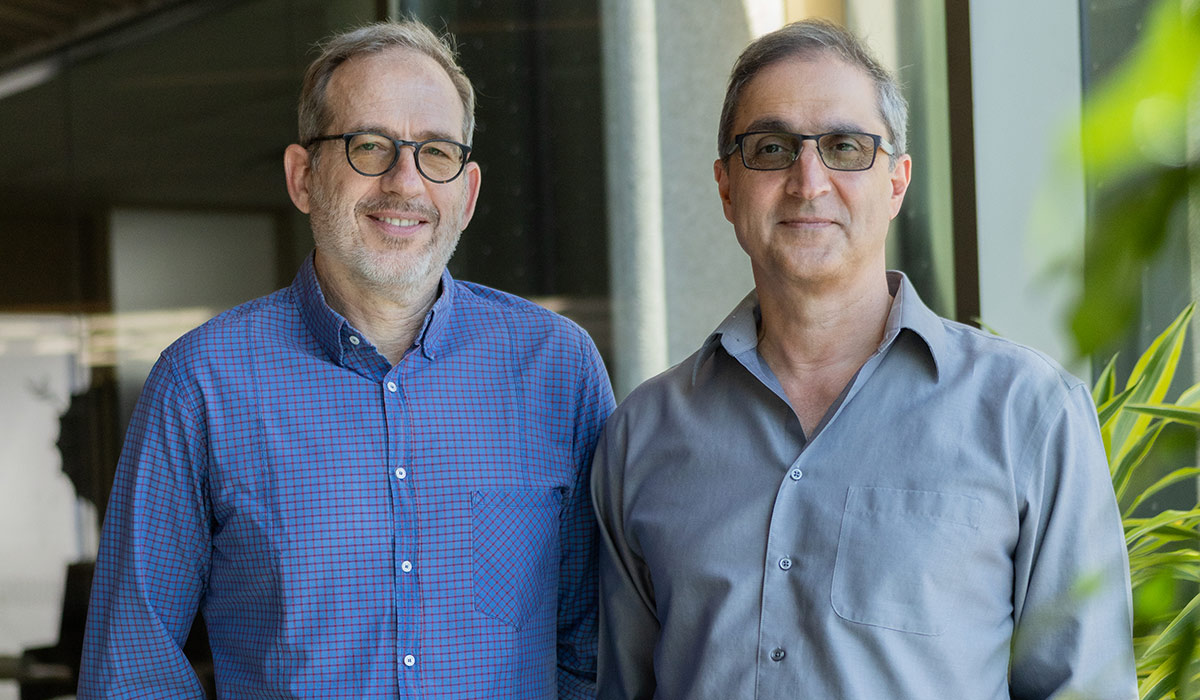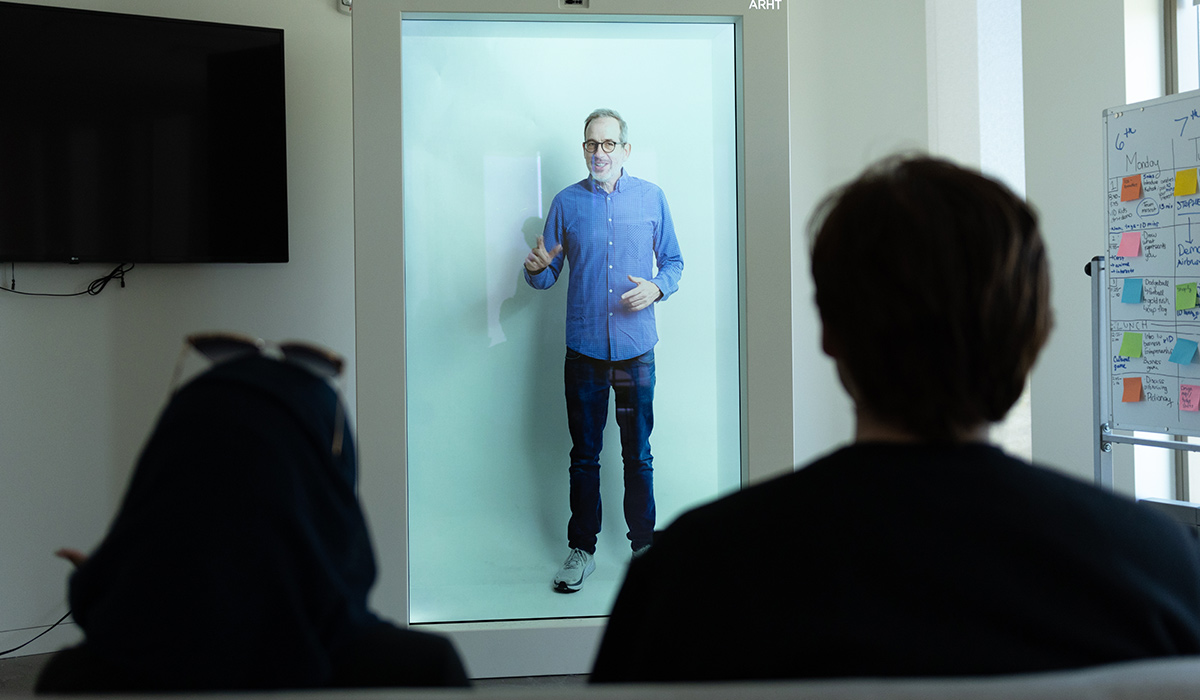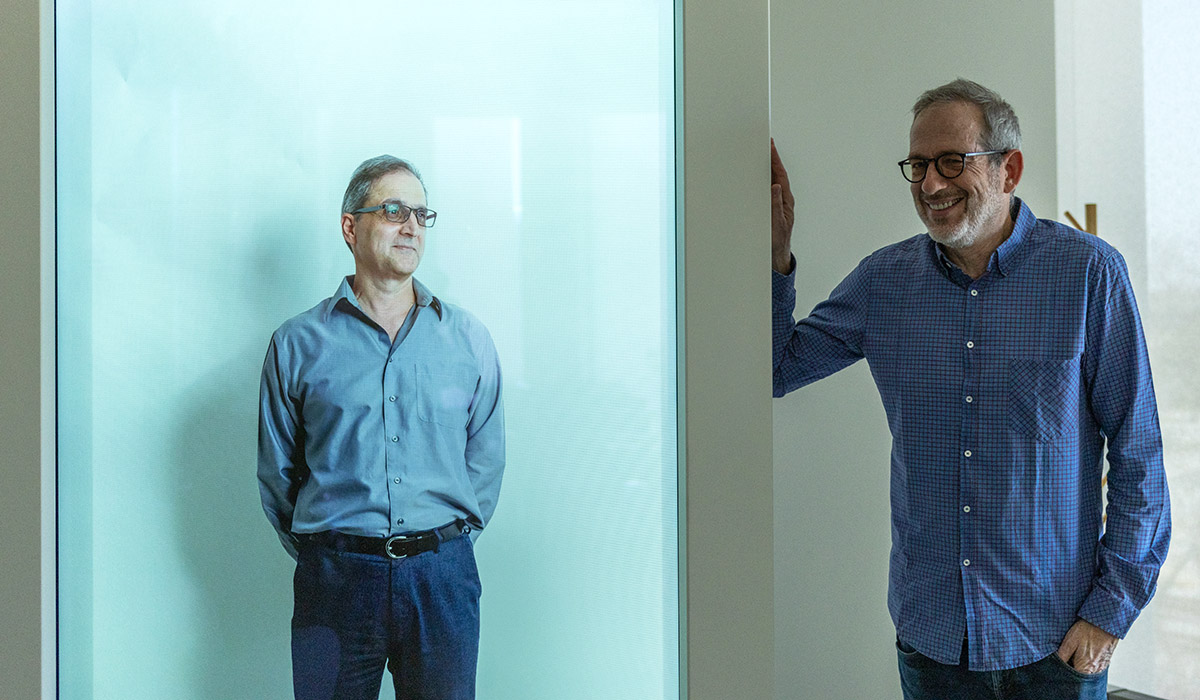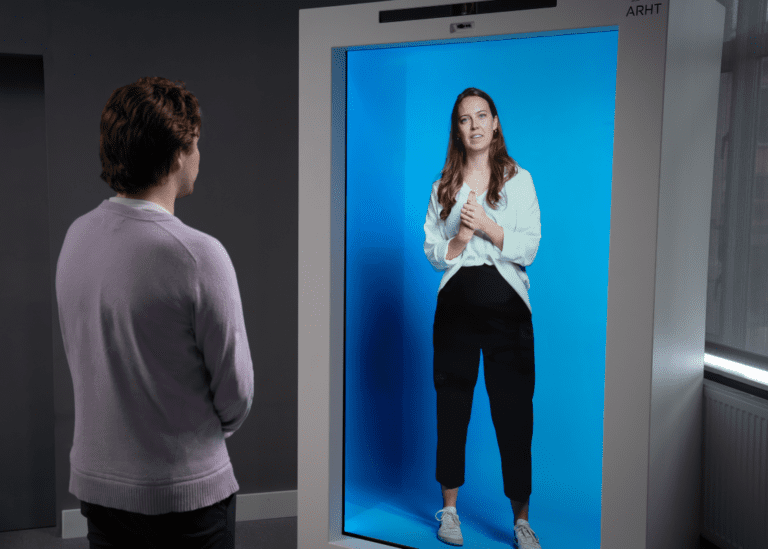(this article was written by Dan Rubinstein and originally published at https://challenge.carleton.ca/holograms-immersive-environments-education/)
A group of students sits inside a classroom at the school in Mayo, Yukon, a small village about 400 kilometres north of Whitehorse. An instructor stands at the front of the room, talking to and looking at the students as she demonstrates a complex idea by manipulating an object in her hands.
It’s just an ordinary, everyday learning experience — except that the teacher is nearly 6,000 kilometres away in a small, TV studio-like room on the Carleton University campus in Ottawa, and the class is looking at an incredibly lifelike and life-sized holographic image inside a touchscreen display unit provided by Toronto-based ARHT Media.
This project, led by Sprott School of Business researcher Troy Anderson and part of a broader partnership between Carleton and the First Nation of Na-Cho Nyäk Dun, is a striking example of the advances that are transforming education.
When the COVID-19 pandemic began, millions of students around the world had to quickly pivot to remote learning, which for many meant hour after tedious hour of watching and listening to their teachers on computer screens. Now, however, new technologies — including holograms and Carleton IT researcher Ali Arya’s virtual reality environments — are creating engaging, interactive experiences for students that transcend distance and other barriers.
“Our partner Northern communities have identified student engagement as one of the more pressing educational problems they face,” says Anderson.
“School staffing and resources are often stretched, and we are investigating the value of this great new technology.

“Everything is changing in education,” he adds.
“Students don’t respond to things the way they did before COVID and expectations are different. We’re in a place where we have to completely rethink how we deliver courses. That’s what we’re trying to do here. It’s all about connection and providing opportunities for young people.”
Holograms and Exciting Educational Environments
Anderson’s work with holograms in Mayo has myriad applications, such as recording oral history, language pedagogy and preservation, craft demonstrations, and working with local youth on projects like designing and building skateboard decks to be sold online. But the educational possibilities are particularly compelling.
The low-latency ARHT HoloPresence unit, ARHT CAPSULE — one of which is also installed in Carleton’s Nicol Building — is equipped with a camera, microphone and soundbar, so whoever is beamed in can interact with anybody in the room.
Back on campus, a fairly simple broadcasting setup — camera, mic, earpiece and a monitor showing what’s happening in the remote classroom — makes it easy for somebody in Ottawa to engage with students and community members in Mayo in real time.

The holograms seem to be more effective than conventional video classes, says Anderson, although he and Sprott colleague Angela Dionisi, with a team of undergraduates, are still assessing their impact.
“Part of our plan is to turn this into a pedagogical tool,” says Anderson, “to help young people learn how to speak traditional languages.”
Immersive Virtual Environments
Arya, a researcher in the Carleton School of Information Technology’s Interactive Media Group, has been working on virtual environments for educational purposes for nearly 15 years.
From early technologies, including a multi-user 3D simulation of the Carleton campus in which international students could practise speaking English with one another, he has moved into immersive head-mounted VR displays and a new web-based VR framework called Circles.
These platforms can be used to teach students in pretty much any discipline, including technical STEM fields, and can be more inclusive than conventional classrooms for people with disabilities.
“You can simulate and visualize things in a more engaging way than traditional ways of presenting content,” explains Arya, who created a stylistic representation of the human brain with Carleton cognitive scientist Jim Davies that students could walk through to learn how it works.
“We can create all kinds of immersive environments that are difficult or impossible to have in the physical world. These can help students understand concepts that are complex and abstract or difficult to visualize.”
Virtual environments can also help ease the stress and anxiety that interferes with a student’s ability to learn by using pictures or messages to motivate and instill a sense of calm. And they can incorporate AI algorithms that give instructors feedback on how students are faring and where they’re struggling.

“If I’m in a physical classroom and give my students an assignment, I have no idea how they’re doing until I see their output,” says Arya.
“In a virtual environment, the system is constantly interacting with the student and I can observe the process they’re going through. Education should involve process-based evaluation rather than just output-based evaluation, because it’s really important to see how students do things rather than what they produce.”
Arya is excited about the possibilities that technological advances are enabling, but ultimately, he says, it’s not about the tools — it’s about creating environments that engage students, so they’re primed to learn.






